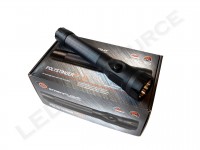 A more compact and lightweight member of the Streamlight Stinger family is the PolyStinger DS LED. As with the Stinger DS LED HP that we first looked at in February, the PolyStinger is also compatible with Stinger family charging products. The PolyStinger DS LED is shorter and lighter than the Stinger DS LED, and also includes the DualSwitch technology that allows independent activation with either the tailcap or head-mounted switch.
A more compact and lightweight member of the Streamlight Stinger family is the PolyStinger DS LED. As with the Stinger DS LED HP that we first looked at in February, the PolyStinger is also compatible with Stinger family charging products. The PolyStinger DS LED is shorter and lighter than the Stinger DS LED, and also includes the DualSwitch technology that allows independent activation with either the tailcap or head-mounted switch.
Key Specifications
- Output: 185 lumens high, 95 lumens medium, 45 lumens low, 185 lumens strobe
- Intensity: 24,000 candela
- Runtime: 2h high, 3h 45min medium, 7h 15min low, 5h 30min strobe
- Battery: NiCd Sub-C Rechargeable Battery Pack
- Length: 8.64″ (8.07″ for PolyStinger LED)
- Diameter: 1.76″ bezel, 1.21″ body
- Weight with Batteries: 11.9 oz. (11.5 oz. for PolyStinger LED)
- Warranty: Limited Lifetime
- MSRP: $155-$242
- Actual Pricing: ~$120
Pricing & Ordering
Depending on charger configuration, MSRP for the PolyStinger DS LED is around $204, and the light is only available in black (single switch version is available in black or yellow). Most configurations can be found for around $120.
Like the Stinger DS LED HP, the PolyStinger DS LED has package choices for charge speed, input voltage, and PiggyBack option. Our recommendation would be a fast charge package, as the slow charge will take the light out of service for an extended period of time and overcharging can reduce battery life.
In The Box
Included in the box are: Streamlight PolyStringer DS LED, NiCd rechargeable battery, charging cradle, 2 x mounting screws, AC adapter, Streamlight catalog, and user manual.
Our package is the 120V fast charge (item # 76814), and of course, contents depends on the package.
Batteries
Proprietary rechargeable nickel-cadmium batteries are used in the PolyStinger DS LED. The battery pack can be recharged up to 1000 times.
To charge the light, insert the barrel of the light into the charger, and pull down until it locks. The charger arms can leave marks on the light, which is normal.
Streamlight advises that the “memory effect” common to NiCd batteries is rare under normal flashlight use, so it isn’t recommended to condition the battery with frequent complete discharging.
The Light
Head
The head features a coated scratch-resistant polycarbonate plastic window and a smooth aluminum reflector.
The scratch resistance comes from a silicon dioxide coating that is cured onto the plastic for a minimum pencil hardness of 3H (meaning that only a pencil with 3H hardness or higher will be able to scratch the window).
Body
The light is made of lightweight polymer, with a section of rubber on the rear that helps maintain a better grip. Charging contacts are on the back of the light, on an elevated triangle that orients the light in the charging cradle.
The head mounted switch is a momentary-capable electronic switch. As such, the switch does not have “on or off” like a mechanical switch, and this allows for the switching modes, or using the other switch, at anytime. More on the user interface in the next section.
Tail Cap
On the tail cap is another electronic switch, which is covered by black rubber. The button is recessed to prevent accidental activation, and also allows the light to tail-stand.
Both the head and tail switches are responsive with good travel.
Modes
All of the Stinger LED lights use the same four-mode user interface.
Single Click: High
A single click activates 100% mode for 185 lumens.
Click and Hold: High-Medium-Low
When either button is pressed and held, the light will slowly cycle through the three brightness levels in high-medium-low-medium-high order. When the button is released, the light will stay in the current mode. The mode can be changed anytime, whether the light is on or off.
Two Fast Clicks: Strobe
With two fast clicks, the 185 lumen strobe is activated. Once again, strobe can be activated anytime, whether the light is on or off. To return the light to high, double-click the switch again (this would turn the light off then immediately turn it back on).
For all modes, a single click will turn the light off. Since the light uses electronic switches, there is a small standby current drain of 5 µA (0.005 mA), which is negligible.
Performance
The PolyStinger DS LED is rated for 185 lumens with its Cree XR-E LED, and it has a cleaner beam pattern than the Stinger DS LED HP because the reflector wraps around the LED. The spill area from the light is quite wide and almost filled the entire frame in the beamshot.
The light is rated for IPX4 water-resistance, which means it can withstand splashing water from all directions, and rainfall would be nothing to be worried about.
Runtime
If you haven’t read our article about runtime graphs and the ANSI FL1 Standard, please click here.
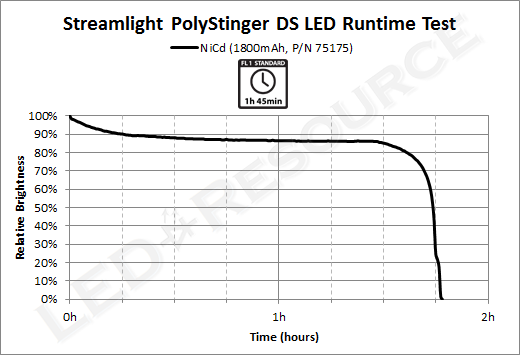
The ANSI FL-1 standardized output and runtime specifications of the PolyStinger DS LED were made using the standard NiCd battery pack. The discrepancy between the manufacturer specification and our runtime test can be attributed to the age of our NiCd battery. With a brand new battery, NiCd runtime will exceed 2h, but our runtime test was conducted six months after publishing this review.
Accessories
Streamlight offers a variety of charging options and add-ons, such as traffic wands and holsters. The cradle charger has been updated with a subtle change: a tab that supports the flashlight body and prevents wobbling.
The PiggyBack charger accessory includes a spare battery and charges both the light and a spare battery at the same time. It is available with a choice of standard or fast charging for the primary charger, but only steady charge for the spare battery.
Conclusion
The PolyStinger DS LED shares many of the same features as the larger Stinger flashlights, but differs in its lightweight polymer construction. Even with a heavy NiCd rechargeable battery, the PolyStinger’s weight and size are still very competitive. The Stinger family has the most versatile charging options of any rechargeable flashlight, and as expected, these chargers are compatible across the product line.
| Pros | Cons |
|
|
Related Links
Streamlight Stinger Series Product Page
Download the Streamlight PolyStinger LED and PolyStinger DS LED Fact Sheet

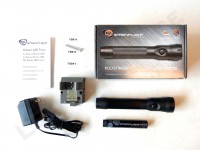
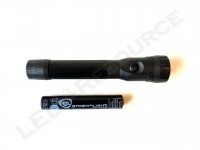
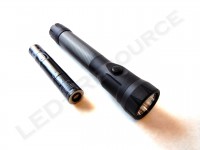
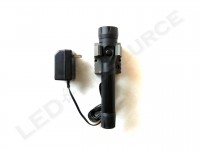
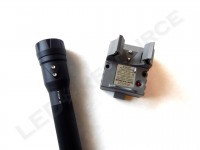
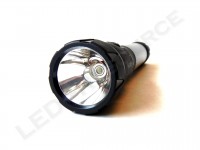
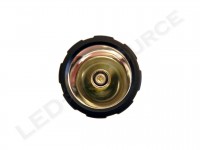
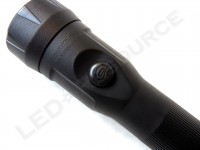
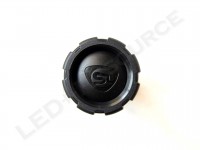
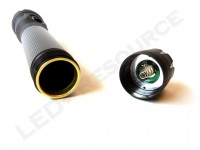
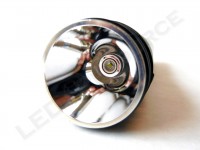
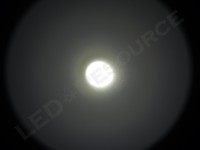
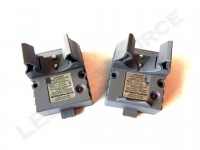
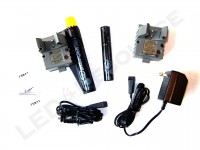
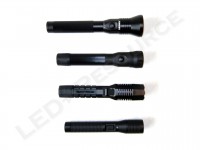
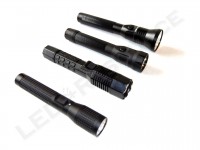



I’ve had polystinger light for many years. Love it. Can I put regular batteries in it?
Ken,
Unfortunately, the rechargeable battery uses a proprietary connector that has both positive and negative, so you cannot use regular batteries.
Robin
I want to purchase a Streamlight stinger. Which has the largest hot spot and spill area between the stinger, polystinger and stinger hp? I will use it at close to medium distances so I want it to light up as much area as possible. Thank you.
Chris,
For close work, you will want low peak beam intensity, as intense beams, such as that from the Stinger DS LED HP, will reflect and cause glare. I would recommend the Stinger LED or Strion LED.
Robin
I believe I have this light besides no tail cap switch. Of all the lights I’ve gotten since still produces the best being from any LED flashlight I’ve ever seen. For some reason it will no longer charge inside of the light. But I can remove the battery and charge it with a 3S charger